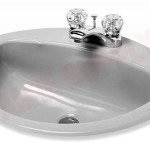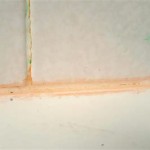Glass Rectangular Vessel Bathroom Sink With Faucet CAD: A Comprehensive Overview
The integration of Computer-Aided Design (CAD) into the realm of bathroom fixtures has revolutionized the design and manufacturing processes. Specifically, the glass rectangular vessel bathroom sink with faucet is a prime example of how CAD technology can optimize aesthetics, functionality, and manufacturing efficiency. This article will delve into the various aspects of designing, specifying, and understanding the technical details behind this increasingly popular bathroom fixture, focusing on the role of CAD in each stage.
The glass rectangular vessel sink offers a contemporary and minimalist aesthetic, providing a focal point in modern bathroom designs. Its clear or tinted glass construction allows light to play, creating a sense of spaciousness and hygiene. The rectangular shape, often with sharp, clean lines, further reinforces the modern design ethos. Unlike traditional undermount or drop-in sinks, the vessel sink sits directly on the countertop, making it easily replaceable and adding a distinct visual element. The accompanying faucet, designed specifically for vessel sinks, is typically taller than standard faucets to accommodate the height of the sink bowl.
The design process for a glass rectangular vessel sink and its accompanying faucet heavily relies on CAD software. These programs allow designers to create accurate three-dimensional models of the sink and faucet, enabling precise visualization and analysis prior to physical prototyping and manufacturing. The use of CAD ensures that the dimensions, angles, and curves of the sink and faucet are perfectly aligned, creating a harmonious and functional design. Additionally, CAD allows for the easy modification of designs to meet specific client requirements or to explore different aesthetic options. The software also facilitates the creation of detailed technical drawings, which are essential for manufacturing and installation.
Many CAD software packages offer capabilities beyond simple geometric modeling. Finite element analysis (FEA) can be performed within the CAD environment to simulate stress distribution within the glass sink under various loading conditions. This ensures the structural integrity of the sink and prevents potential cracking or breakage. Computational fluid dynamics (CFD) can also be utilized to optimize the faucet design, ensuring efficient water flow and minimizing splashing. These simulation tools are invaluable for creating high-performance and durable bathroom fixtures.
Key Point 1: Design Considerations and CAD Modeling
The design of a glass rectangular vessel sink requires careful consideration of several factors. The dimensions of the sink must be appropriate for the size of the bathroom and the countertop on which it will be installed. The thickness of the glass is a critical factor affecting the sink's durability and resistance to impact. Common glass thicknesses range from 12mm to 19mm, with thicker glass providing greater strength. The edges of the glass must be carefully finished to prevent chipping or cracking. This can be achieved through grinding, polishing, or tempering processes.
CAD software plays a vital role in accurately representing these design considerations. Designers utilize CAD tools to create precise geometric models of the sink, specifying the dimensions, glass thickness, and edge finishing details. The software allows for the creation of complex curves and bevels, ensuring a smooth and aesthetically pleasing surface. Furthermore, CAD enables the simulation of different glass colors and textures, allowing designers to visualize the final product before manufacturing begins. The software also aids in the creation of detailed technical drawings, which are essential for manufacturing and quality control.
The faucet design is equally important. Its height and reach must be carefully considered to ensure that water flows directly into the sink bowl without splashing. The style of the faucet should complement the modern aesthetic of the glass sink. Common faucet designs include single-lever faucets, widespread faucets, and wall-mounted faucets. The internal mechanisms of the faucet, such as the valve and aerator, must be designed for optimal water flow and efficiency.
CAD software is used to create detailed models of the faucet, including its internal components. The software allows for the simulation of water flow through the faucet, ensuring optimal performance. Designers can also use CAD to optimize the faucet's ergonomic design, making it comfortable and easy to use. The software facilitates the creation of detailed technical drawings, which are essential for manufacturing and assembly.
Key Point 2: Material Selection and Manufacturing Processes
The choice of glass is paramount for a glass rectangular vessel sink. Tempered glass is the preferred material due to its superior strength and safety characteristics. Tempered glass is created through a heat treatment process that significantly increases its resistance to impact and thermal shock. If tempered glass breaks, it shatters into small, relatively harmless pieces, reducing the risk of injury. Other types of glass, such as annealed glass, are not suitable for sink applications due to their fragility.
The manufacturing process for a glass rectangular vessel sink typically involves cutting the glass to the desired shape, grinding and polishing the edges, and tempering the glass. CAD data is used to control the cutting and grinding machines, ensuring accurate dimensions and smooth edges. The tempering process involves heating the glass to a high temperature and then rapidly cooling it, creating a compressive stress layer on the surface. This compressive stress layer significantly increases the glass's strength.
The faucet's material selection is also crucial. Brass is a common material choice for faucets due to its durability and resistance to corrosion. The faucet's finish, such as chrome, brushed nickel, or oil-rubbed bronze, must be carefully selected to complement the sink's design and the overall bathroom décor. The internal components of the faucet, such as the valve and aerator, are typically made from brass or plastic.
The manufacturing process for a faucet typically involves casting, machining, and finishing. CAD data is used to create molds for the casting process, ensuring accurate dimensions and smooth surfaces. The faucet is then machined to refine its shape and create precise threads for the connections. The finishing process involves polishing and plating the faucet to achieve the desired appearance and corrosion resistance. All these steps benefit from precise CAD models ensuring accuracy and consistency.
Key Point 3: Installation and Maintenance Considerations
The installation of a glass rectangular vessel sink requires careful attention to detail. The countertop must be perfectly level and free from any imperfections that could cause stress on the sink. The sink is typically mounted on the countertop using a silicone adhesive or a mounting ring. The faucet is installed separately, either directly on the countertop or on a nearby wall. The drain assembly must be properly sealed to prevent leaks.
CAD can facilitate the creation of installation diagrams and instructions. These diagrams can clearly illustrate the steps involved in installing the sink and faucet, making the process easier for both professionals and DIY enthusiasts. CAD can also be used to create templates for cutting the countertop opening, ensuring a precise fit for the sink.
Maintenance of a glass rectangular vessel sink is relatively straightforward. The sink can be cleaned with a mild soap and water solution. Abrasive cleaners should be avoided, as they can scratch the glass surface. The faucet should be cleaned regularly to remove water spots and mineral deposits. The drain assembly should be checked periodically for leaks.
CAD data can be used to create maintenance manuals and troubleshooting guides. These guides can provide information on how to properly clean and maintain the sink and faucet, as well as how to diagnose and repair common problems. The manuals can include detailed diagrams and instructions, making it easier for users to keep their bathroom fixtures in optimal condition. The overall design benefits from the use of standardized parts and easily accessible maintenance points, considerations that can be readily incorporated during the CAD design phase, thereby simplifying the maintenance process and extending the lifespan of the bathroom fixture.
In summary, the glass rectangular vessel bathroom sink with faucet represents a confluence of modern design aesthetics and advanced manufacturing technologies. The use of CAD software is integral to the design, manufacturing, installation, and maintenance of these fixtures, ensuring precision, durability, and aesthetic appeal. From the initial design concept to the final installation, CAD plays a critical role in every stage of the process, optimizing performance and enhancing the overall user experience.

Kohler 2369 Antilia 28 Rectangular Vessel Bathroom Sink No Overflow
Hot Melted Hand Painted Modern Looking Tempered Rectangular Brown Glass Vessel Bathroom Sink With Faucet Arsumo Bwy10 129 Get 5 For Your First Order

Kraus Elavo 19 3 In Rectangular Vessel Bathroom Sink White Vitreous China With Pop Up Drain And Faucet Matte Black C Kcv 121 1220mb

Vigo Donatello 18 L X 13 W 4 H Titanium Glass Rectangular Vessel Bathroom Sink In Grey The Home Depot

Rectangular Vessel Sinks Bathroom Bath Depot

Arsumo Rectangular Brown Glass Vessel Bathroom Sink Bwy15 037 2

Kraus Elavo 19 3 In Rectangular Vessel Bathroom Sink White Vitreous China With Pop Up Drain And Faucet Matte Black C Kcv 121 1220mb

Vigo Donatello 18 L X 13 W 4 H Titanium Glass Rectangular Vessel Bathroom Sink In Grey The Home Depot

Arsumo Rectangular Brown Glass Vessel Bathroom Sink Bwy15 037 2

Kraus Elavo 19 3 In Rectangular Vessel Bathroom Sink White Vitreous China With Pop Up Drain And Faucet Matte Black C Kcv 121 1220mb







